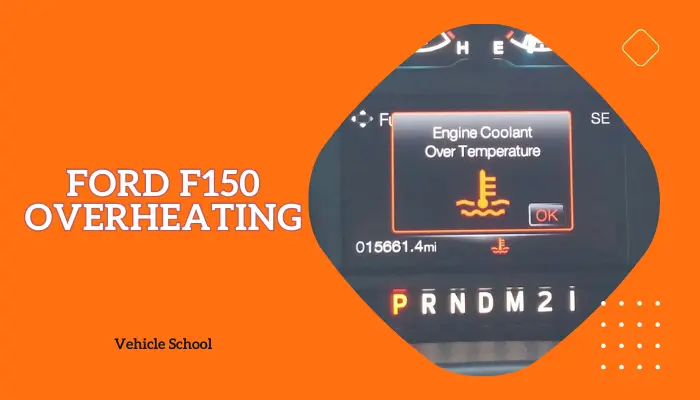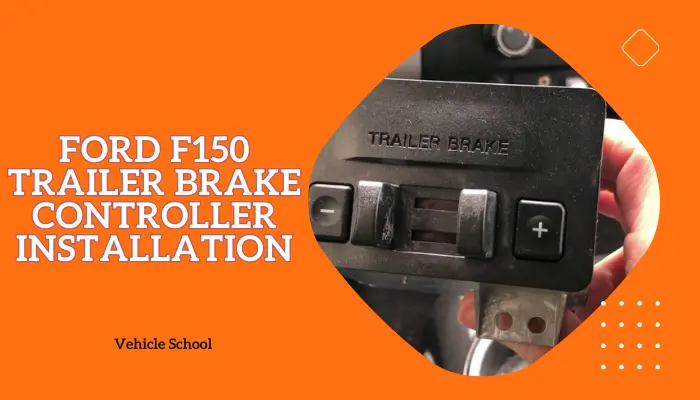Your F150 wiper fluid not working properly could be due to debris, frozen lines, or kinked hoses. To fix this issue, you’ll need to reconnect hoses, clear clogs, replace the nozzle, or get a new hose. You may also need to clean or replace the pump and check the wiring.
That may seem like a lot, but all the reasons make it easier to fix yourself than you’d think. I’ll teach you how to in this article, so keep reading.
Why Is Your F150 Washer Fluid Not Spraying?
Let’s have a closer look at why your washers are not spraying fluid:
1. Debris In Reservoir
If debris and dirt gather in the washer fluid reservoir, it can obstruct the tubing and nozzle.
During operation, the pump pressurizes the fluid, but debris acts as a barrier, preventing fluid flow to the nozzle.
It’s also possible that the nozzle itself is broken or cracked.
2. Frozen Washer Lines
In freezing temperatures, using washer fluid without adequate antifreeze properties can cause ice formation within the tubing, blocking the flow.
There’s also a design flaw in the check valve or hoses of some F-150s, which allows water to linger, increasing the risk of freezing in sub-zero temperatures and rendering washer jets inoperative until thawed.
3. Kinked Hose
A kinked hose disrupts the fluid flow from the reservoir to the nozzle.
When the hose is bent or compressed, its diameter is restricted, impeding the passage of pressurized fluid.
This restriction prevents enough washer fluid from reaching the nozzle, causing the system to fail in spraying onto the windshield.
4. Failed Pump Motor
The washer system relies on a pump motor to pressurize and propel fluid.
If the pump fails, there’s no pressurization, and fluid won’t reach the nozzle.
Audible pump motor sounds indicate an operational electrical circuit.
If heard, tubing issues (blockages or pinching) are likely; if not, an electrical malfunction in the pump motor or circuitry is also possible.
5. Wiring Issue
Sometimes, critters sneak into the engine area and chew on the wires or hoses for the washer system.
This can create breaks in the electrical circuit, disrupting power to the washer motor.
If the electrical connection supplying power to the motor isn’t properly plugged, it can cause the system to act up or fail altogether.
Wiring issues within the wiper system often cause a common problem reported by F-150 owners that the wipers won’t shut off properly. Even after being turned off, they persist in intermittent mode, wiping every 12-15 seconds.
6. Air Trapped In Tubing
Priming is essential to expel any air trapped in the tubing and ensure the continuous flow of washer fluid.
When the fluid tank is completely empty, air may enter the system, disrupting the fluid’s path to the nozzle.
Priming serves to establish hydraulic continuity, enabling the washer system to deliver fluid to the windshield when activated.
How To Fix ford f150 windshield wiper fluid not working?
Before starting on any of the more thorough fixes, check the passenger side of your truck.
The washer hose is attached to a Brace there. If yours is disconnected from the connector, it might just have been squirting fluid into the engine bay instead.
Look into the basics first too, you might just have an empty washer fluid tank. After you’re done checking, try the following fixes:
1. Clear Clogs And Debris
Keep in mind that while you’re doing this, you have to avoid inserting objects into the nozzles, as that can damage the spray patterns.
- Check for debris by blowing air through the hose to clear clogs.
- Run washer fluid through the lines, then strain it to remove debris.
- Disconnect the hose and blow compressed air through the nozzles to clear blockages.
- If there’s a deteriorated rubber seal, consider replacement if necessary.
- Remove the nozzles themselves and blow them out with compressed air.
- Examine the reservoir for debris and clean it to prevent future clogs.
- Reconnect components, add fluid, and test the system by running the motor.
Notes: You can also use a dust-off can with a straw attached or a Waterpik at full strength if compressed air is not available. You also have to make sure that the supply line remains open during these methods.
2. Change The Washer Spray Nozzle
If that didn’t work, a faulty nozzle might be the cause. Here’s how to replace it:
- Pry out the plastic clips to remove the front cowl.
- Lift and remove the wiper arms.
- Pull up on the metal clips to lift the shroud.
- Twist off and lower the spray-nozzle hose.
- Squeeze and remove the old nozzle.
- Insert and lock in the new spray nozzle.
- Reattach the hose to the new nozzle.
- Put back the cowl and shroud, securing them with clips.
- Reinstall the wiper arms, aligning with the notch.
- Close the hood and test the washer spray.
3. Drill The Check Valve
If you’ve got a 2015-2016 F150 that was built before 5/1/2016, you could try out this fix. It’s easy and only takes 5 minutes or so to do:
- Gently lift the cowl where the hoses are on the passenger side by raising the two tabs.
- Take out the circular check valve from the hose pathway.
- Drill through the check valve.
- You can also replace the valve with a stem connecting the two ends to bypass it.
4. Replace The Washer Hose
If you’d rather not damage a part of the truck or want less of a patchwork fix, you’ll need to get a new washer hose. If you’ve got a 2015-2016 F150, it may be using a bad one.
- Lift the left and right cowl panel grilles, leaving the wiper arms in place.
- Twist the lock ring of the C-lock coupler about 90 degrees to disconnect the washer hose from the left washer jet. Repeat for the right jet.
- Remove the cowl panel clip.
- Disconnect the washer hose from the C-lock coupler at the battery junction box (BJB).
- Hook up the new washer hose to the C-lock coupler at the BJB.
- Clip the new hose onto the cowl panel.
- Connect the washer hose to the left and right cowl trim panels and washer jets.
- Snap the C-lock coupler back onto the left washer jet.
- Put back the right and left cowl panel grilles.
5. Dealing With Pump Issue
If you think it’s the pump, then there’s a quick fix you can try:
- Remove the windshield washer motor pump.
- Pull out the next piece connected to the pump.
- Examine the piece and notice debris and dirt on the screen.
- Clean the screen thoroughly.
- Reinstall the components back into the F-150.
6. Prime The Reservoir
- Ensure the washer fluid reservoir is filled.
- Start your truck’sengine.
- Press and hold the windshield wiper control button for 5-10 seconds.
- Listen for the sound of the washer pump motor while holding the button.
- Watch the windshield to see if the washer fluid begins to spray.
- Repeat the process once more if the fluid doesn’t initially spray.
7. Check The Wiring
- Check the wiring diagram and look for chewed wires connected to the wiper system.
- Disconnect the power connector from the washer motor.
- Inspect the power connector and wiring for wear, breakage, or loose connections.
- Fix damaged wires or hoses using electrical tape or heat-shrink tubing.
- Replace compromised sections for durability.
- Reconnect the power connector to the washer motor, making sure the pins align.
- Switch on the washer system to confirm the fix.
8. Swap The Washer Pump
This is the last part you’ll need to fix if nothing works; the process is more complicated, but not by much.
- Unscrew the plastic clip to remove the shield flap guard.
- Take out the three 10mm bolts holding the headlight.
- Give the headlight a good pull to get to the washer pump.
- Disconnect the wires from the headlight and put it aside.
- Drain the washer fluid into a bucket and unhook the hose from the pump.
- Disconnect the wire from the pump and pull it out of the rubber gasket.
- Put in the new pump, don’t forget to replace the gasket.
- Reconnect the wire, hose and fill up the washer fluid.
- Check if the washer pump works before putting the headlight back.
- Reattach the headlight with the three bolts.
- Put the shield flap guard back and clip it.
- Test out the wipers.
FAQs
Is there a fuse for the Washer Fluid Pump?
No. The only fuse connected to the system is Fuse 22 30 Amp under the Fuse Box. However, it only controls the windshield wiper motor, not the pump. The latter takes power from the wiper circuit.
Final Thoughts
I hope these fixes get your F150’s wipers back in action.
After all, the last thing you want is to be cruising down the highway with a view obscured by random stuff. That’s just a huge safety risk.
If this guide doesn’t cut it, consider checking in with a tech to have them look in deeper. Now go on, try out these fixes, and remember to drive safely.






